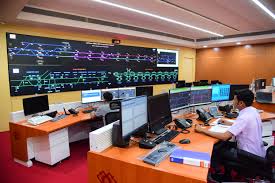SCADA
Hello there!
To all those who want to know about SCADA, here is a gist of my views on it.
What is SCADA?
SCADA stands for Supervisory Control And Data Acquisition. It is a computer based system that gathers real-time data in order to analyze, monitor and control the equipment and conditions.
SCADA systems are employed all over the globe to monitor and control any equipment in various industries.
Some major applications of SCADA are as follows:
- Chemical industries
- Healthcare systems
- Information and communication technology
- Space communication
- Water plants
- Railways and many more..
Recently, I did an internship in the railways regarding SCADA and I did learn a few things. I would want to share my views here. In order to know about the application of SCADA in the railway sector continue reading...
SCADA in the Railways
Railway electrification to freight
Every cost in life and shipping can be calculated using a single, straightforward formula: cost of power versus energy used. It's definitely a win if we can obtain power at low costs and convert them into effective energy use. Let's start with the preference for trains over trucks. Due to their greater aerodynamics and the fact that steel on steel transfers energy more effectively than rubber on road, railroads can move freight up to six times more efficiently than trucks. When switching from diesel-powered trains to electric trains, that energy efficiency scales up significantly. What proportion of the energy is sent to the wheels? Electricity accounts for 95% of diesel combustion.
Yes, it is true that the electrified railroads are almost three times as efficient as the diesel-powered ones.
SCADA and Trains
1. Remote telemetry units (RTUs). These RTUs, along with their attached sensors, are the eyes and ears of the operation, gathering data on specific pre-programmed events such as connectivity, wattage, temperature, and more.
When something moves out of what you have determined is an acceptable range (as a broad example: a generator overheats), an alert is sent out.
2. Master stations. These master stations are the brains. They serve as a central location where alerts are displayed allowing you to evaluate and take action. An automated response can be pre-programmed, or you can alert the right people to resolve the situation.
Some key features that are advantageous include:
- Management systems can be monitored and controlled on a centralized basis.
- Conservation of energy due to use of centralized control.
- Safety and reliability can be improved as maintenance and inspection activities can be planned on historical data.
- Maintenance personnel can work much efficiently since multiple data are automatically collected and correlated to identify anomalies in system performance that may require attention.
- Has automatic measurement functions which enable the frequency of patrol inspections and maintenance work to be reduced.



Excellent!!!!!!!!!!
ReplyDelete